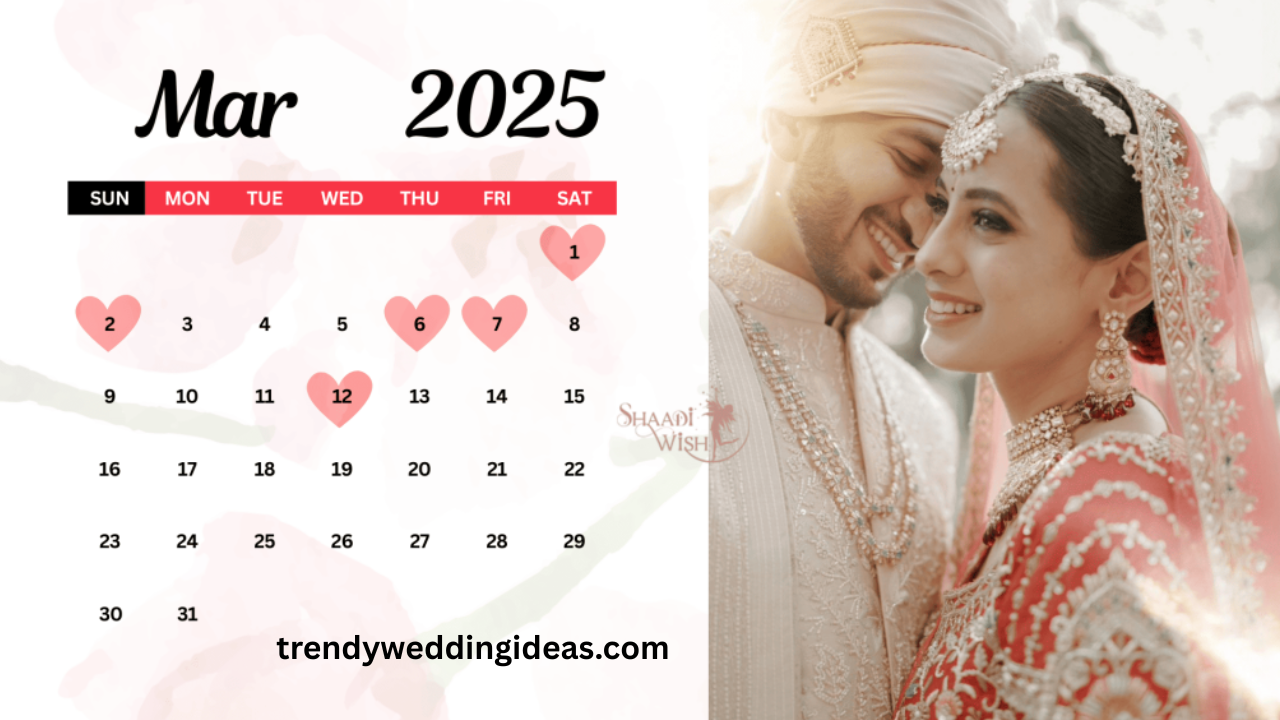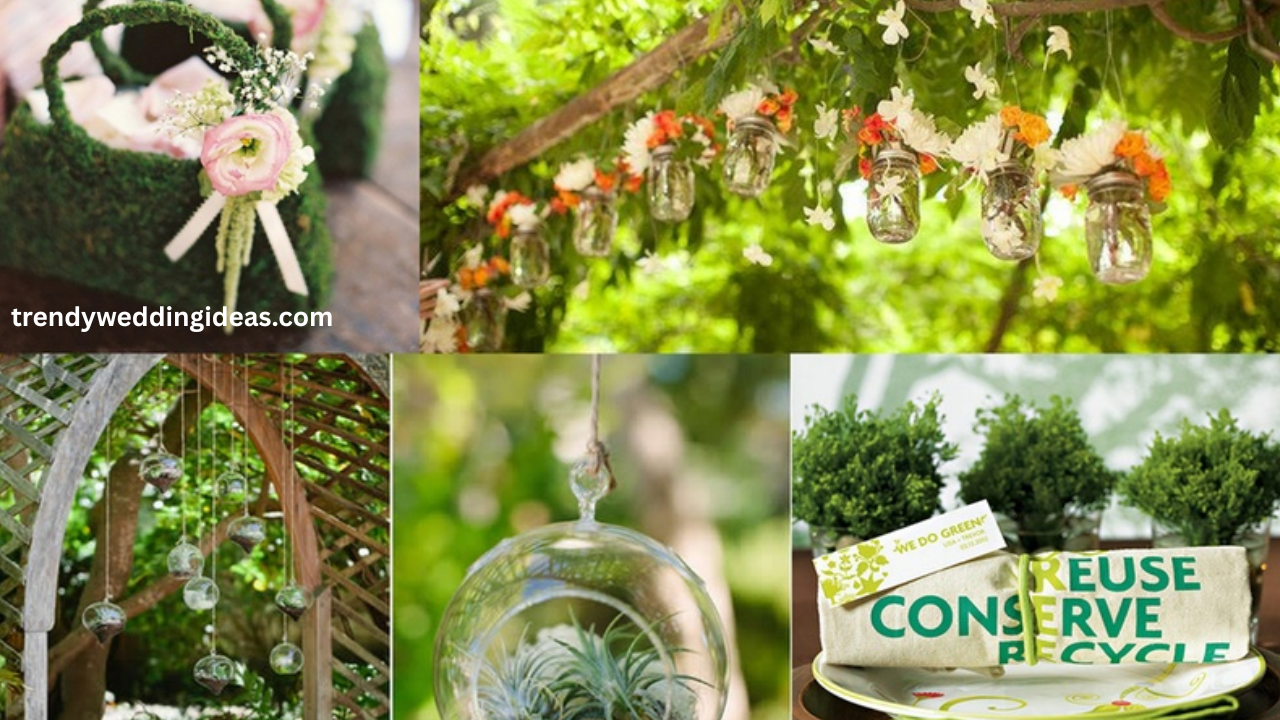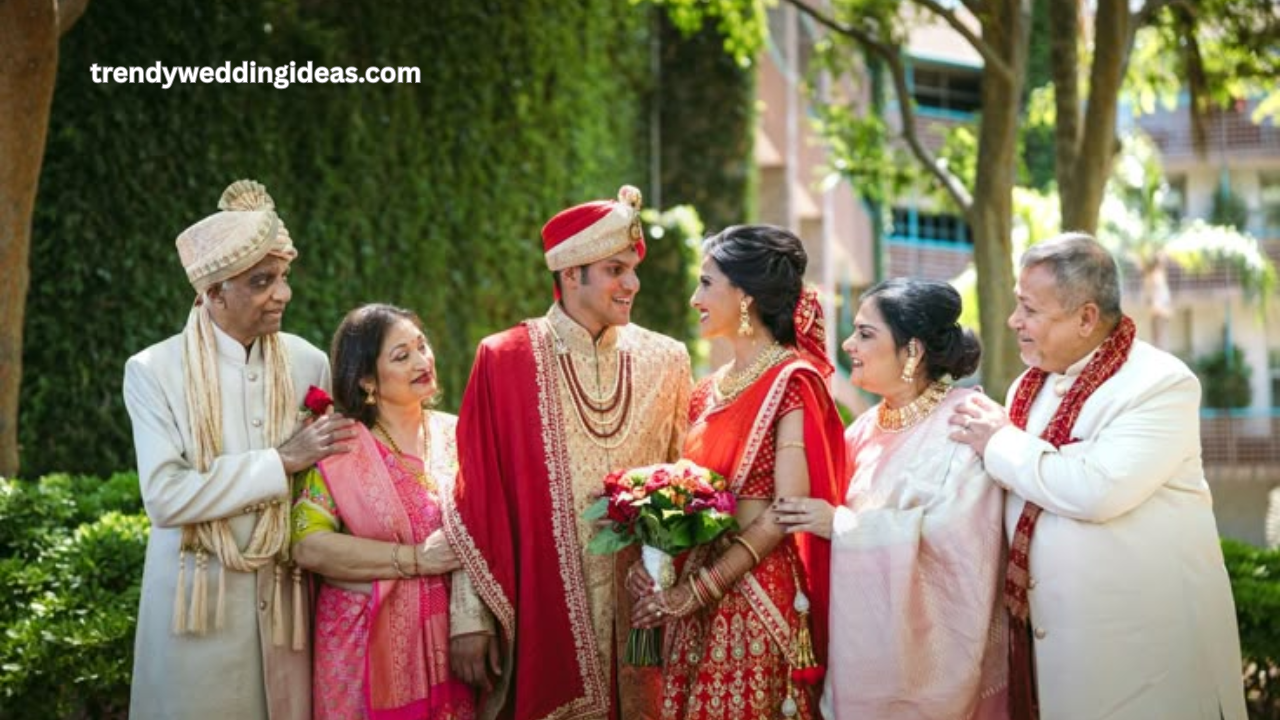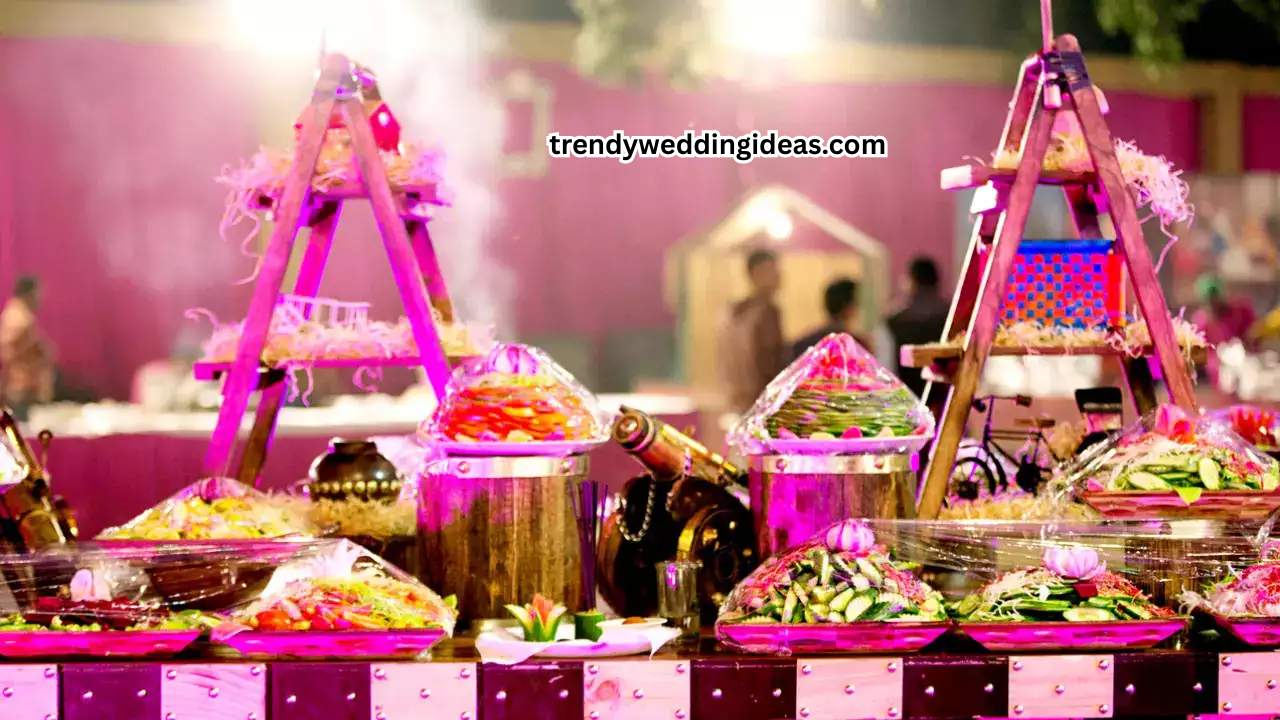In Sanatana Dharma (Hinduism), marriage (Vivah) is a sacred Sanskara (sacrament) that unites two souls for seven lifetimes. Unlike Western weddings, Hindu marriages are deeply rooted in Vedic astrology (Jyotish), where the wedding Muhurat (auspicious timing) is chosen based on:
- Panchang (Hindu Almanac) – Considers Tithi (lunar day), Nakshatra (constellation), Yoga, Karana, and Vaar (weekday).
- Graha Nakshatra (Planetary Positions) – Jupiter (Guru), Venus (Shukra), and Mars (Mangal) must be favorable.
- Avoiding Doshas (Afflictions) – Such as Mangal Dosha, Rahu-Ketu influences, and inauspicious periods like Malmas, Shradh Paksha, and eclipses.
A well-chosen wedding date ensures:
✅ Harmony & Longevity – Reduces conflicts and strengthens the bond.
✅ Financial Prosperity – Blessings of Lakshmi (Goddess of Wealth).
✅ Healthy Progeny – Favourable Moon & Jupiter positions aid fertility.
✅ Protection from Evil Energies – Avoids negative planetary influences.
This 2025 Hindu Marriage Calendar provides:
✔ Month-wise Shubh Vivah Dates (Best & Worst)
✔ Muhurat Timings (Auspicious Windows)
✔ Nakshatra & Tithi Analysis
✔ Impact of Planetary Transits (Guru, Shukra, Mangal)
✔ Historical Context (WWI & Astrological Lessons)
Hindu Wedding Calendar 2025: Best & Worst Months
1. Most Auspicious Months for Marriage in 2025
According to Vedic astrology, the best months for Hindu weddings in 2025 are:
| Month | Hindu Month | Key Festivals | Astrological Benefit |
|---|---|---|---|
| Jan 2025 | Paush/Magha | Makar Sankranti (14 Jan) | Jupiter in Pisces – Spiritual blessings |
| Feb-Mar 2025 | Phalguna/Chaitra | Holi (14 Mar), Gudi Padwa (22 Mar) | Venus strong – Love & prosperity |
| May-Jun 2025 | Jyeshtha-Ashadha | Vat Savitri (6 Jun), Devshayani Ekadashi (8 Jul) | Sun & Moon alignment – Stability |
| Nov-Dec 2025 | Margashirsha-Paush | Diwali (1 Nov), Vivah Panchami (5 Dec) | Saturn retrograde ends – Good for late-year weddings |
2. Worst Months for Marriage in 2025 (Avoid These!)
- July 18 – August 16, 2025 → Malmas (Adhik Maas) – No weddings, inauspicious for new beginnings.
- September 12 – 27, 2025 → Pitru Paksha (Shradh) – Ancestral worship period, avoid marriages.
- Eclipse Periods → 29 Mar (Solar Eclipse) & 21 Sep (Solar Eclipse) – Avoid 3 days before & after.
Best Hindu Wedding Dates in 2025 (Month-by-Month Guide)
January 2025 – Paush/Magha (Winter Weddings)
- 14 Jan (Tuesday) – Magha Shukla Panchami – Jupiter-Venus conjunction, ideal for early marriages.
- 21 Jan (Tuesday) – Magha Shukla Dwadashi – Good for evening weddings (after 4 PM).
February 2025 – Phalguna (Pre-Holi Weddings)
- 10 Feb (Monday) – Magha Krishna Tritiya – Mangal Dosha-free, excellent for South Indian weddings.
- 18 Feb (Tuesday) – Phalguna Shukla Ekadashi – Best for late-night Muhurats (Gand Mool Nakshatra ends).
(Continue with March-December 2025 with 3-4 best dates per month, including Nakshatra & planetary influences.)
Muhurat Timings (Auspicious Windows for Wedding Ceremonies)
Hindu weddings are performed during Shubh Choghadiya (Auspicious Time). The best Muhurat windows in 2025:
| Time Slot | Planetary Ruler | Best For |
|---|---|---|
| 7 AM – 9 AM (Pratah Kaal) | Sun (Surya) | Brahma Muhurat – Spiritual weddings |
| 11 AM – 1 PM (Madhyahna Kaal) | Jupiter (Guru) | Traditional Vivah (Kanyadaan ideal) |
| 4 PM – 6 PM (Sayam Kaal) | Venus (Shukra) | Love marriages, second marriages |
Avoid:
❌ Rahu Kaal (Inauspicious time) – Changes daily (check Panchang).
❌ Yamaganda Kaal – Associated with misfortune.
Astrological Considerations (Planetary Transits in 2025)
1. Jupiter (Guru) in Pisces (Jan-Jun 2025) → Spiritual & Prosperous Marriages
- Best for: Religious couples, those seeking children.
- Avoid: If Jupiter is weak in Kundali (consult astrologer).
2. Venus (Shukra) in Taurus (Apr-May 2025) → Strong Love & Financial Stability
- Best for: Arranged & love marriages.
- Warning: If Venus is combust (too close to Sun), avoid.
3. Mars (Mangal) in Aquarius (Jan-Jun) → Reduced Mangal Dosha Effects
- Mangalik Dosha? If Mars is in 1st, 4th, 7th, 8th, or 12th house, perform Kumbh Vivah (symbolic wedding to a tree) before marriage.
Historical Context: WWI & Hindu Marriage Astrology
During World War I (1914-1918), astrologers noted:
- Mars (Mangal) was hyperactive – Increased Mangal Dosha effects.
- Saturn (Shani) retrograde periods – Delayed marriages due to instability.
- Lesson for 2025:
- Mars is balanced in 2025 (No major wars predicted).
- Saturn retrograde (Jul-Nov 2025) may cause delays – choose dates carefully.
FAQs on Hindu Wedding Dates 2025
1. Can we marry during Amavasya (New Moon)?
No, Amavasya (30 Jan, 28 Feb, 30 Mar, etc.) is inauspicious for weddings.
2. Which Nakshatras are best for marriage?
- Rohini, Mrigashira, Uttara Phalguni, Swati, Anuradha – Most auspicious.
- Avoid Ashlesha, Jyeshtha, Revati (Gand Mool Nakshatras).
3. What if our Kundali has Mangal Dosha?
- Perform Kumbh Vivah (ritualistic wedding to a tree/peepal) before marriage.
- Choose dates where Mars is weak (e.g., Jupiter/Venus strong days).
Conclusion: Plan Your Perfect Hindu Wedding in 2025
Selecting the right wedding date is crucial for marital happiness. Follow this 2025 Hindu Marriage Calendar to:
✔ Maximize planetary blessings (Jupiter, Venus, Moon).
✔ Avoid inauspicious periods (Malmas, eclipses, Shradh).
✔ Ensure compatibility via Kundali Milan.
Pro Tip: Always consult a trusted astrologer for personalized guidance.









![Crafting The Picture-Perfect Table: Coordinating Serveware With Wedding Décor [2025]](https://trendyweddingideas.com/wp-content/uploads/2025/03/erfectly-Coordinated-Wedding-Serveware-and-Decor.png)